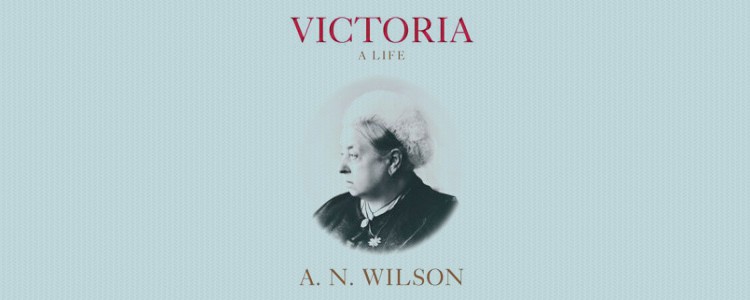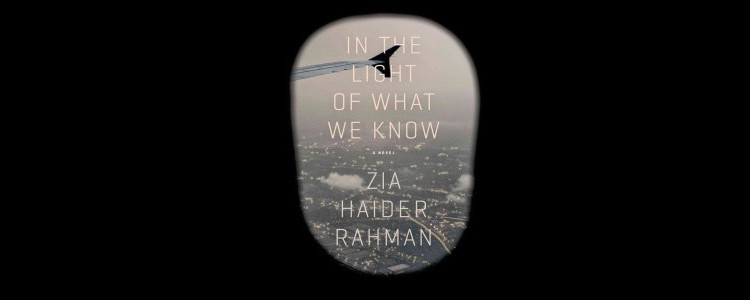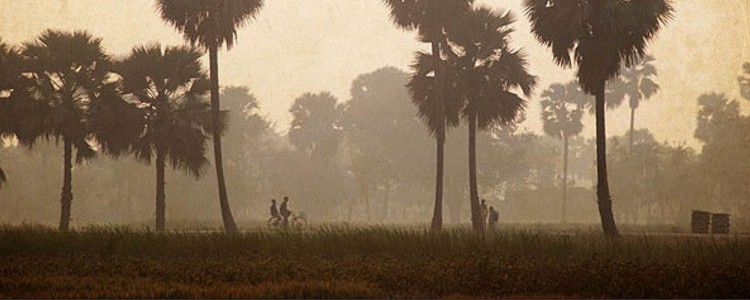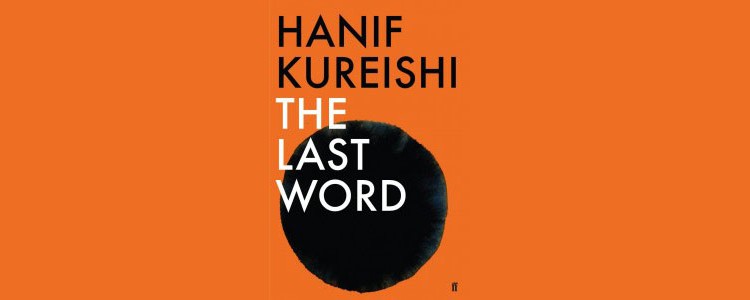 “…she kept a gimlet eye on foreign affairs and on domestic politics throughout, even at her lowest moments of despair. But the diurnal tedium of her life, which drove courtiers to distraction, is in itself a very remarkable fact. Apart from being the Queen, she had done so very little. It is one of the things which make her such a completely fascinating figure for a biographer, since she compels us to concentrate upon her, rather than upon her deeds. The tempting thing, when trying to make sense of any human life, whether famous or obscure, is to concentrate upon outward activities. Queen Victoria does not allow us to do that, since, apart from being an expert in watercolours and a fairly avid reader of popular fiction, she did not really ‘do’ anything: certainly not in the second half of her life. What a poet of her times once called ‘those years and years of world without event’ made up her drama. So, as well as her life being that of her own times, as must be the case of a monarch in her position, her life was also that of the inner woman, of whom — from the letters and the journals — we have a vivid sense.”
“…she kept a gimlet eye on foreign affairs and on domestic politics throughout, even at her lowest moments of despair. But the diurnal tedium of her life, which drove courtiers to distraction, is in itself a very remarkable fact. Apart from being the Queen, she had done so very little. It is one of the things which make her such a completely fascinating figure for a biographer, since she compels us to concentrate upon her, rather than upon her deeds. The tempting thing, when trying to make sense of any human life, whether famous or obscure, is to concentrate upon outward activities. Queen Victoria does not allow us to do that, since, apart from being an expert in watercolours and a fairly avid reader of popular fiction, she did not really ‘do’ anything: certainly not in the second half of her life. What a poet of her times once called ‘those years and years of world without event’ made up her drama. So, as well as her life being that of her own times, as must be the case of a monarch in her position, her life was also that of the inner woman, of whom — from the letters and the journals — we have a vivid sense.”
(p.553 )
A. N. Wilson’s Queen Victoria: A Life, is the first authorised biography of the Queen. This has been written with permission granted to A. N. Wilson by Queen Elizabeth II to access documents, journals, letters, etc related to Queen Victoria. It is a detailed account of Queen Victoria, with a fine balance achieved between giving a personal history combined with the socio-political events of the time. With a historian, novelist and a fine scholar of the Victorian period such as A.N. Wilson writing this account, it is fascinating. For instance when discussing Queen Victoria’s journals, he says: “She began her journals, when aged thirteen, in the momentous year of the Reform Bill becoming law; she makes no allusion to it, any more than Jane Austen, in her novels, alluded to the Napoleonic Wars.” ( p.63)
Queen Victoria straddles a period in history that was a watershed moment for science, technology, social reform, literature, and politics. Her grandfather’s reign was synonymous with the loss of the colonies in America, but by the time she died in 1901, the British Empire was said to be so vast that the sun never set on it and had been crowned Empress of India. When the queen was attending her first Drawing Room, Charles Darwin was on board The Beagle, headed towards the Galapagos Islands. For her coronation, 28 June 1838, “the crowds were huge. Railways had brought an unprecedented numbers into the capital.” (p.86) During her reign, her husband, Prince Albert organised the Great Exhibition in London ( 1851). –“the largest the world had ever seen, as demonstration of industrial design and expertise”. A fabulous description of the planning involved and range of exhibits at the fair– exhibits from India, snowshoes from Canada, gas fittings, brass bedsteads, buttons, needles and agricultural machinery from a new English countryside, photography, iron works, statues and ceramics, steam engines, globes and clocks, French silks, a model of the Niagara Falls and a mass of zinc from America weighing 16,400 pounds, four decorated rooms from Vienna and a fountain which spurted eau-de-cologne… . “By the time the cheaper rates had been fixed only 200,000 people had attended, but the multitudes soon came – some 6 million visitors before the Exhibiton closed.” And a profit of £200,000 had been made. ( A friend on Facebook told me when I posted this information as a status, her great grandmother went from India by ship to attend it!)
For the first time there is insight on the Prince Consort, Prince Albert and the influence he wielded in court, over Victoria, in politics, science, and as a patron of the Arts. “When he was dead, Victoria found herself making lists of all the things Albert had been good at — his construction of the beautiful new dairy at Windsor, the laying out of the superb kitchen gardens, the brilliance at the piano, the musical compositions, the building up of the royal art collection, the Great Exhibition of 1851, the creation of the Royal Horticultural Garden, the Kensington Museums, the foundation of Wellington College… And there was all his political involvement, both in Germany and in Britain. This was not to mention his productive work as Chancellor of the University of Cambridge, his programmes of social housing in Kennington, his fascination with scientific discovery, and his wide reading in contemporary literature and in philosophy.” (p.218-9) Throughout the book there are details of Prince Albert’s meticulous planning, sharp political moves, his active participation in England and yet, for most of his life he was perceived as a foreigner, who had come from Germany just as the other two notable Germans now living in England — Karl Marx and Friedrich Engels.
Prince Albert’s sense that the social and economic injustices of the industrial towns of ‘England’ would lead to communism, meanwhile were shared by two young German exiles who arrived in England during the same year — Karl Marx and Friedrich Engels. Perhaps the three Germans — Albert, Marx and Engels — were in a better position to get a perspective on the British Isles than some of its longer-standing inhabitants. ( p.146)
Queen Victoria has been the longest serving monarch in England ( 63 years and 7 months), mother of nine children and grandmother of forty-two and matriarch of Royal Europe, through the marriages of her children.When an authorised biography of a queen has been commissioned during the reign of another monarch, it is impossible not to compare the life written about with the present queen and her experiences. The fact that such a book has been published, allowing personal accounts of the royal family to be made public, making a realistic portrait as far as possible, including references to the scandal-prone Prince Eddy, Duke of Clarence and Avondale, the queen’s grandson. For instance, A. N. Wilson writes, “There was never any firm evidence that Eddy was bisexual, let alone homosexual, but he was the sort of man to whom scandalous stories stuck like burrs. ( In 1962, upon no evidence whatsoever, it was even claimed that he was Jack the Ripper.)” (p.488) Reporting such incidents of indiscretion amongst the members of the Royal family would have previously been unheard of, more so in a commissioned project such as this. Yet the inclusion of these episodes is also a reflection of the transformation the British monarchy has had to experience in the current reign of Queen Elizabeth II. Dwelling upon Queen Victoria’s relationship with John Brown and her Munshi, would probably not have been permissible earlier. But now ample space, well-documented and researched, has been allotted to the significant presence these men had in the queen’s life.
Entrusting a historian with the task of writing a biography implies that there is attention paid to historical details. For instance in the references to the uprising of 1857, A. N. Wilson in his description brings together various lines of thought about how the incident is perceived — a mutiny or an uprising or “as the first rumblings of Indian nationalism, or merely localized expressions of outrage”. (p.213). As for Queen Victoria read the accounts with mounting disgust. There are plenty of examples of such historical accuracy throughout the book — Crimean War, Africa, Afghanistan, etc. Sure there are moments of hagiographical genuflections towards Queen Victoria and Prince Albert. While describing the portrait made of the couple by Brocky when they were twenty-two years old and had already started to have children, A. N. Wilson says “Brocky …immortalizes a couple who are mythological progenitors, like Abraham, the father of many nations”. (p.100) It presents the life of a queen as an twenty-first century reader would expect — a history, personal anecdotes contextualized by socio-historical events, with a strong focus on the queen as a woman too. It scorches rumours for instance of Queen Victoria’s paternity and how she came to be a carrier of Haemophilia. It introduces the Victorian Era to a modern reader, but at the same time forms an informed backdrop to an account of a formidable woman, who was much more than the dumpy woman, usually portrayed in her widow’s garb of a black dress and the white cap.
This is a biography worth reading. It raises the bar of how biographies should be written, with plenty of detail, without making it turgid to read.
Update ( 16 Oct 2014)
The manuscript was read by a representative of the palace and commented upon. And the publishers had to have their permission to use all of the material which is subject to Royal Copyright.
A. N. Wilson Victoria: A Life Atlantic Books, London, 2014. Hb. pp. 580. Rs. 999 ( Distributed by Penguin Books India)
 As far as her place in history is concerned, Sophia was perhaps her own worst enemy. She never sought glory and disliked speaking in public. Before her death, when asked to contribute to her entry in Who’s Who, Sophia Duleep Singh’s was one of the briefest in the book. Under ‘interests’ she wrote just one line: ‘The Advancement of Women’. (p.378)
As far as her place in history is concerned, Sophia was perhaps her own worst enemy. She never sought glory and disliked speaking in public. Before her death, when asked to contribute to her entry in Who’s Who, Sophia Duleep Singh’s was one of the briefest in the book. Under ‘interests’ she wrote just one line: ‘The Advancement of Women’. (p.378)











